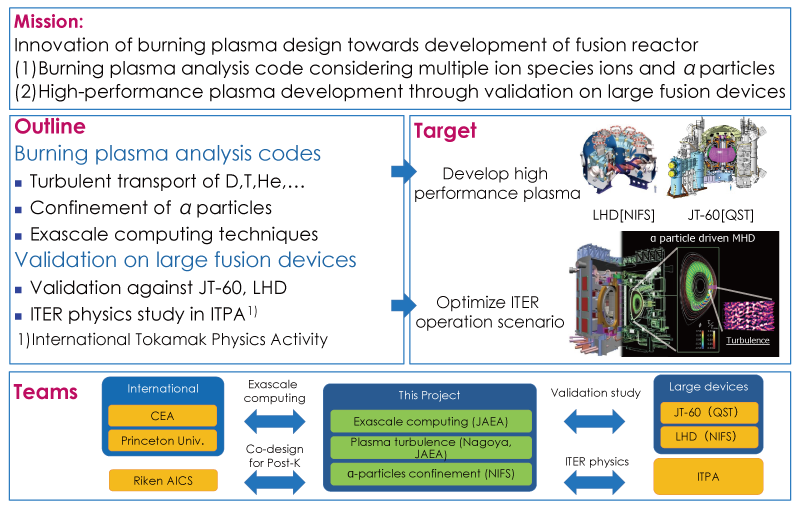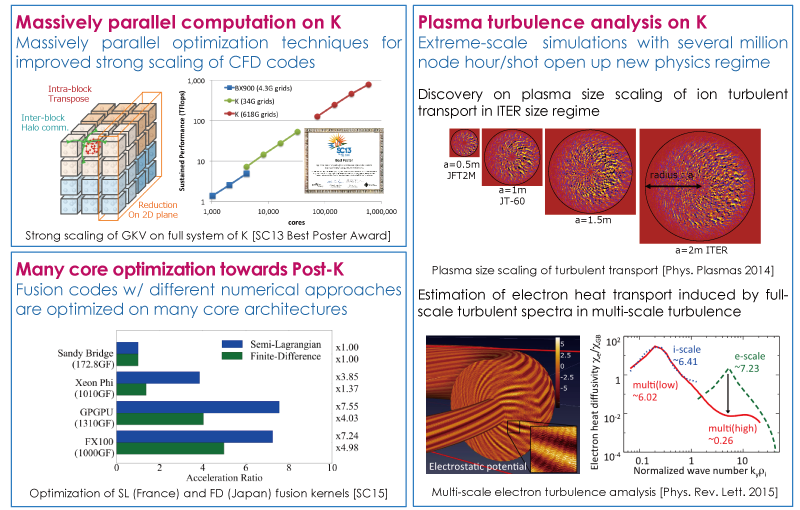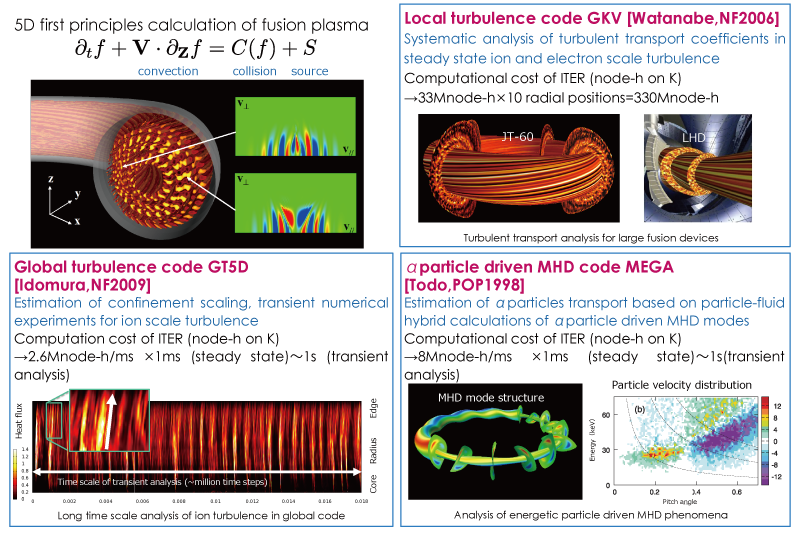Yoshimura Laboratory
Department of Systems Innovation, School of Engineering, The University of Tokyo
Sub-issue D
Fusion ReactorCore design of fusion reactor
- PI; IDOMURA, Yasuhiro
Japan Atomic Energy Agency, Center for Computational Science and e-Systems (Computer Science Research and Development Office)
National Institutes for Quantum and Radiological Science and Technology, Fusion Energy Research and Development Directorate, Naka Fusion Institute
Fusion is the energy source of the sun. The fuel for fusion reactors, deuterium and lithium, is extractable from seawater, which is abundant and available worldwide. An enormous amount of energy can be generated from a small amount of fuel. Fusion reactors are relatively safe (runaway reactions cannot occur) and have low environmental impact (no carbon emission, short-lived radioactivity). Therefore, fusion reactors are expected to be long-term clean alternative energy sources.
Sub-issue D focuses on the development of simulation technologies that will lead towards practical fusion reactors. We will contribute to determining optimized operation scenarios in the next generation experimental fusion reactor ITER by performing five-dimensional (5D) first-principles simulations on the post-K computer.
Target
Optimize operation scenarios for fusion reactors by 5D first-principles simulations of burning plasmas
Challenges
5D first-principles simulations (based on the Boltzmann’s equation) of plasma turbulence and magnetohydrodynamics (MHD) phenomena in ITER core plasmas are extremely challenging, but will be made possible using the post-K computer. We will develop simulation methods and physics models for analysis of burning plasma in ITER, and establish standard core design codes, to lead the ITER project forward.
Members
IDOMURA, Yasuhiro (PI):Japan Atomic Energy Agency/National Institutes for Quantum and Radiological Science and Technology
WATANABE, Tomo-hiko: Professor, Graduate School of Science, Nagoya University
TODO, Yasushi: Professor, National Institute for Fusion Science, National Institutes of Natural Sciences
Core design of fusion reactor
- Outline -

- Achievements using K computer and progress in preparatory phase -

- Applications on the post-K computer -

